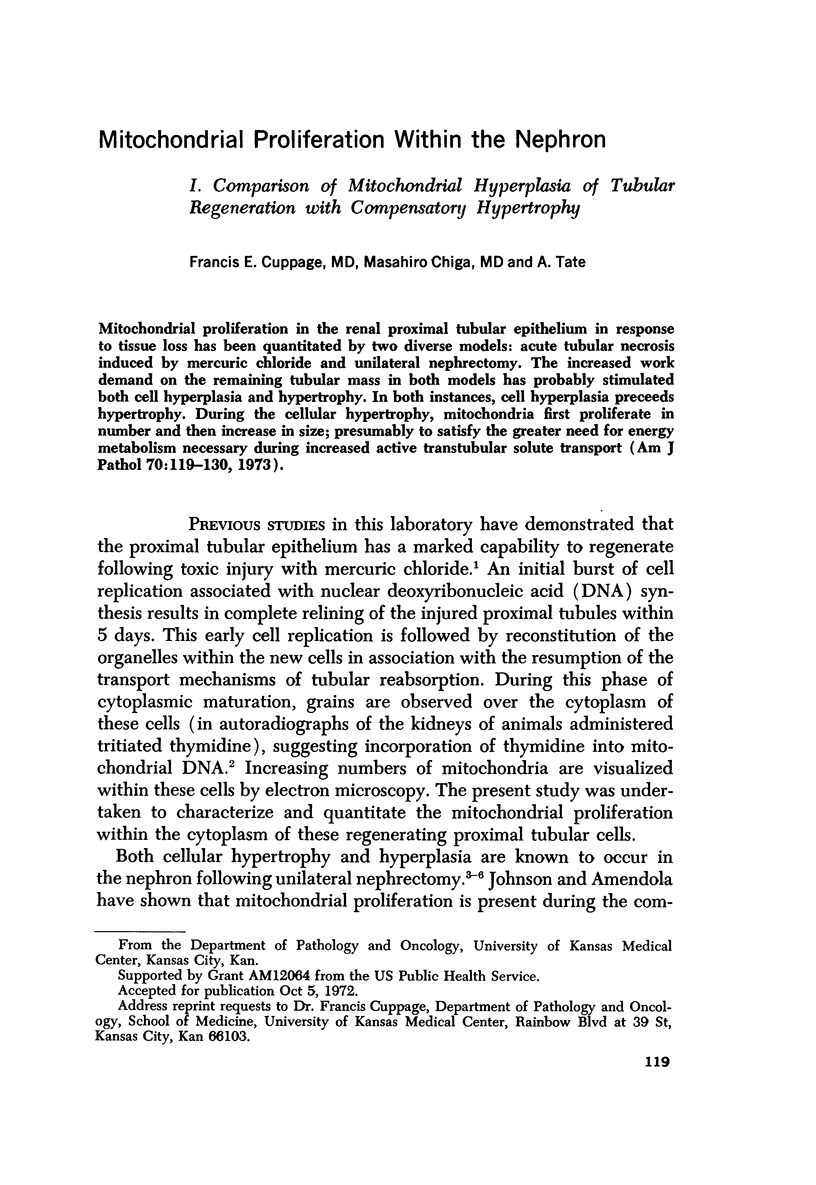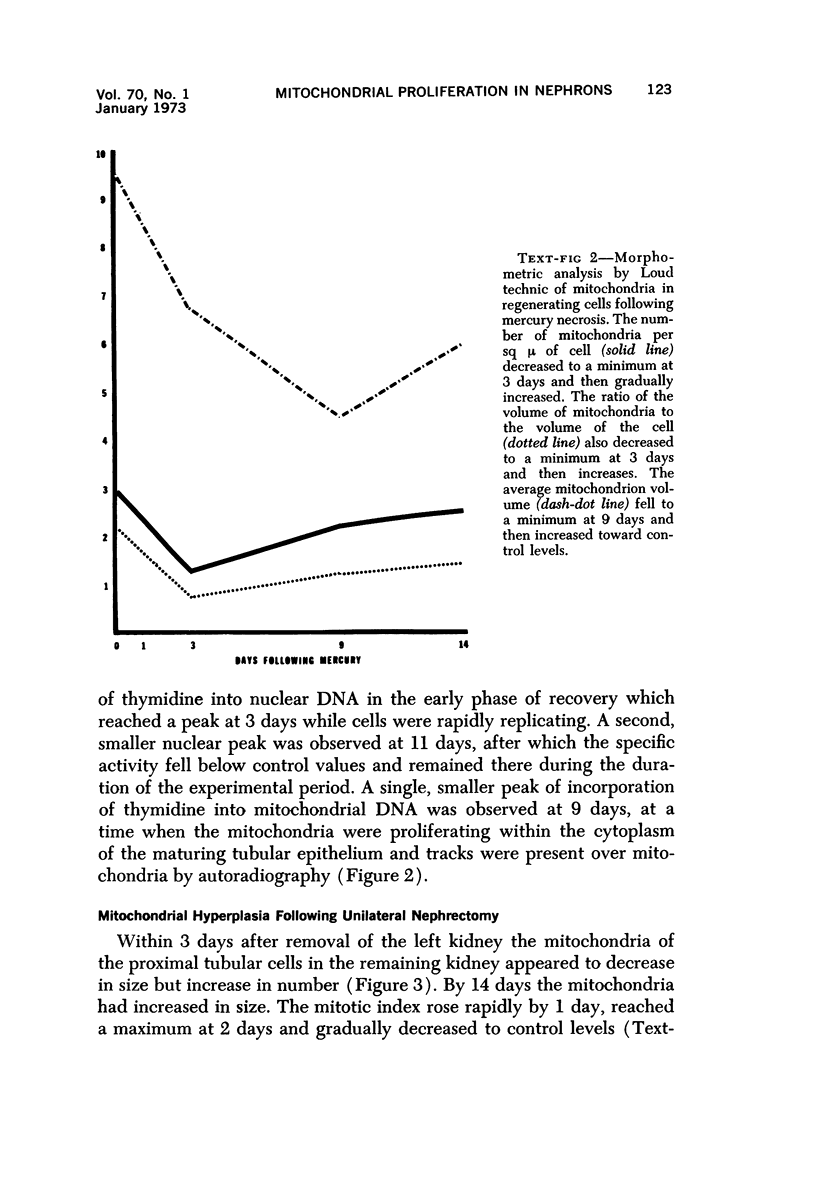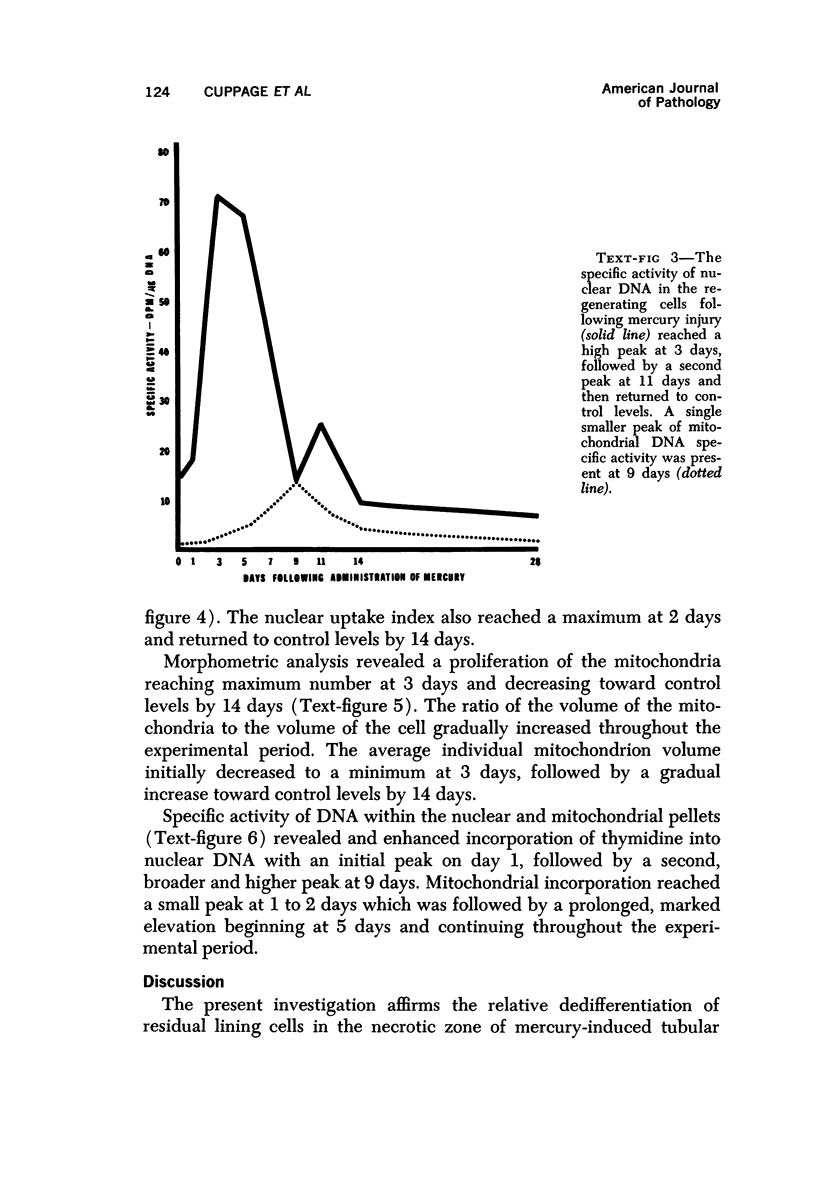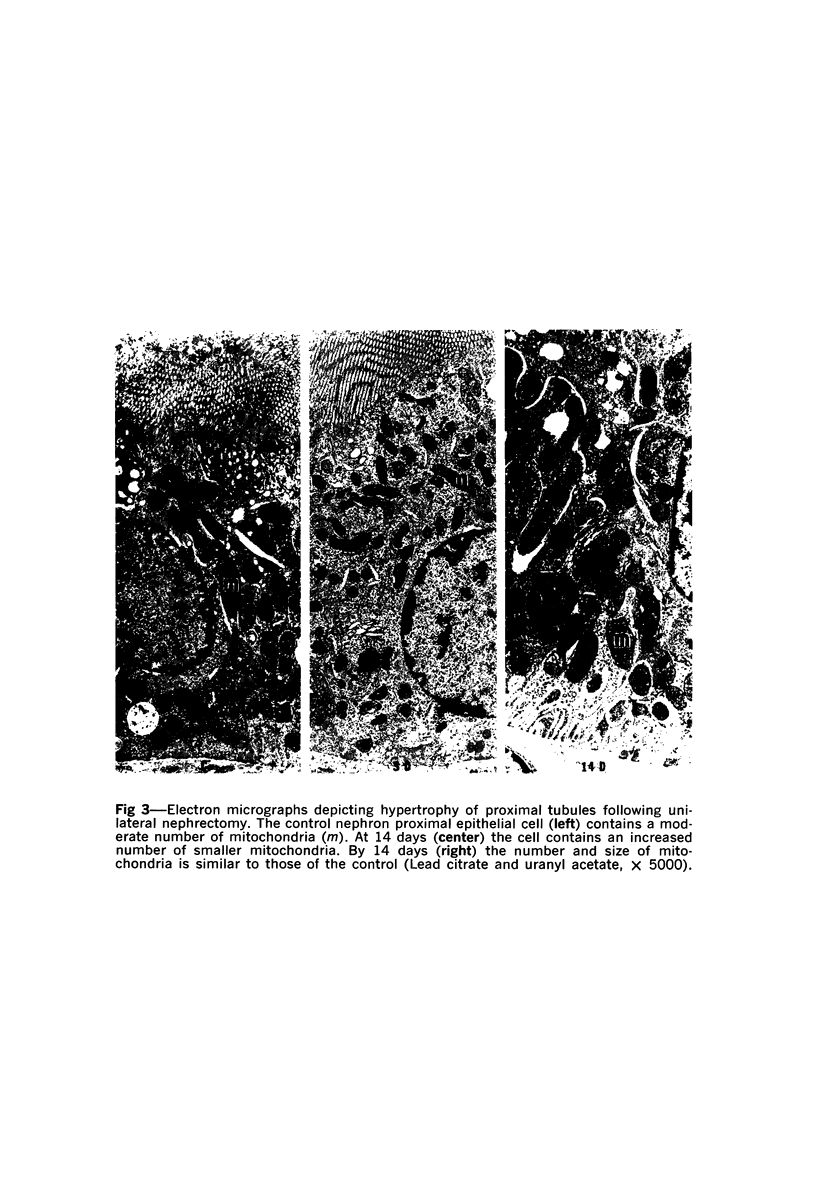Abstract
Mitochondrial proliferation in the renal proximal tubular epithelium in response to tissue loss has been quantitated by two diverse models: acute tubular necrosis induced by mercuric chloride and unilateral nephrectomy. The increased work demand on the remaining tubular mass in both models has probably stimulated both cell hyperplasia and hypertrophy. In both instances, cell hyperplasia preceeds hypertrophy. During the cellular hypertrophy, mitochondria first proliferate in number and then increase in size; presumably to satisfy the greater need for energy metabolism necessary during increased active transtubular solute transport.
Full text
PDF











Images in this article
Selected References
These references are in PubMed. This may not be the complete list of references from this article.
- Anderson W. A. The fine structure of compensatory growth in the rat kidney after unilateral nephrectomy. Am J Anat. 1967 Sep;121(2):217–247. doi: 10.1002/aja.1001210204. [DOI] [PubMed] [Google Scholar]
- BURY H. P., CRANE W. A., DUTTA L. P. CELL PROLIFERATION IN COMPENSATORY RENAL GROWTH. Br J Urol. 1965 Apr;37:201–210. doi: 10.1111/j.1464-410x.1965.tb09589.x. [DOI] [PubMed] [Google Scholar]
- Coe F. L., Korty P. R. Protein synthesis during compensatory renal hypertrophy. Am J Physiol. 1967 Dec;213(6):1585–1589. doi: 10.1152/ajplegacy.1967.213.6.1585. [DOI] [PubMed] [Google Scholar]
- Cuppage F. E., Cunningham N., Tate A. Nucleic acid synthesis in the regenerating nephron following injury with mercuric chloride. Lab Invest. 1969 Nov;21(5):449–457. [PubMed] [Google Scholar]
- Cuppage F. E., Tate A. Repair of the nephron following injury with mercuric chloride. Am J Pathol. 1967 Sep;51(3):405–429. [PMC free article] [PubMed] [Google Scholar]
- Fox M., Wahman G. E. Etiology of the compensatory renal response. Observations on the role of the lymphoid system. Invest Urol. 1968 May;5(6):521–538. [PubMed] [Google Scholar]
- Goss R. J. Hypertrophy versus hyperplasia. Science. 1966 Sep 30;153(3744):1615–1620. doi: 10.1126/science.153.3744.1615. [DOI] [PubMed] [Google Scholar]
- HUDSON G., LAZAROW A., HARTMANN J. F. A quantitative electron microscopic study of mitochondria in motor neurones following axonal section. Exp Cell Res. 1961 Sep;24:440–456. doi: 10.1016/0014-4827(61)90445-1. [DOI] [PubMed] [Google Scholar]
- Johnson H. A., Amendola F. Mitochondrial proliferation in compensatory growth of the kidney. Am J Pathol. 1969 Jan;54(1):35–45. [PMC free article] [PubMed] [Google Scholar]
- Johnson H. A., Vera Roman J. M. Compensatory renal enlargement. Hypertrophy versus hyperplasia. Am J Pathol. 1966 Jul;49(1):1–13. [PMC free article] [PubMed] [Google Scholar]
- Katz A. I., Epstein F. H. Relation of glomerular filtration rate and sodium reabsorption to kidney size in compensatory renal hypertrophy. Yale J Biol Med. 1967 Dec;40(3):222–230. [PMC free article] [PubMed] [Google Scholar]
- Katz A. I. Renal function immediately after contralateral nephrectomy: relation to the mechanism of compensatory kidney growth. Yale J Biol Med. 1970 Dec;43(3):164–172. [PMC free article] [PubMed] [Google Scholar]
- Lytton B., Schiff M., Jr, Bloom N. Compensatory renal growth: evidence for tissue specific factor of renal origin. J Urol. 1969 May;101(5):648–652. doi: 10.1016/s0022-5347(17)62395-4. [DOI] [PubMed] [Google Scholar]
- Malt R. A. Compensatory growth of the kidney. N Engl J Med. 1969 Jun 26;280(26):1446–1459. doi: 10.1056/NEJM196906262802606. [DOI] [PubMed] [Google Scholar]
- Nass M. M. Mitochondrial DNA: Advances, Problems, and Goals. Science. 1969 Jul 4;165(3888):25–35. doi: 10.1126/science.165.3888.25. [DOI] [PubMed] [Google Scholar]





